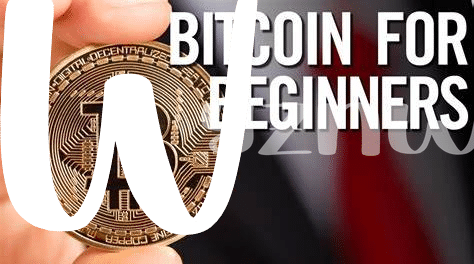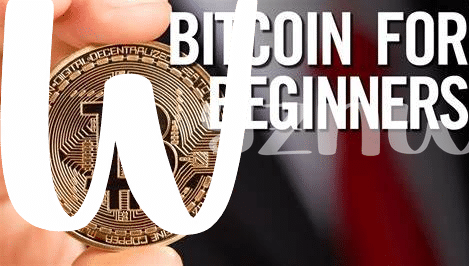Exploring the Basics of Bitcoin Fees 🚀

Imagine you’re sending a letter, but instead of stamps, you use digital coins called Bitcoin. Whenever you send Bitcoin, you pay a small fee to let the network’s messengers (miners) know you’d like your letter (transaction) delivered quickly. Think of these fees like postage stamps for the digital age; they’re tiny prices you pay to ensure your transaction zips through the network and reaches its destination swiftly. What’s cool is that these fees aren’t fixed; they change based on how busy the network is, kind of like how postage might cost more during the holiday season when everyone is sending cards.
To give you a clearer picture, let’s take a look at how Bitcoin fees have varied over time:
| Date | Average Fee (in Bitcoin) |
|---|---|
| January 1, 2021 | 0.000054 BTC |
| June 1, 2021 | 0.000025 BTC |
| December 1, 2021 | 0.000030 BTC |
This variation shows that, like the cost of mailing a package, the fees can go up or down depending on several factors. The goal is to pay just the right amount of “postage” to get your transaction processed efficiently without overpaying. Understanding these basics will help you navigate the world of Bitcoin transactions with ease, saving you money and time. ✉️📬
Timing Your Bitcoin Transactions Wisely ⏰
Imagine you’re at the store, waiting for the best time to check out so you can skip the long lines. In the world of Bitcoin, timing works a bit like that too. By choosing the right moment to make your transaction, you can save a bit of cash on fees. During moments when not many people are moving their Bitcoin around, the network isn’t as busy, which can mean lower fees for you. It’s a bit like avoiding rush hour traffic to save on gas and time.
To get savvy with your timing, think of Bitcoin’s network as a highway. During peak hours, it’s congested, and fees go up because everyone wants to move at the same time. But, if you learn to pick the quieter moments, you’ll spend less on fees. This is where tools and websites that estimate fees can come in handy. They help you understand the best times to transact. Also, for a deeper dive into Bitcoin’s technology and value, check out https://wikicrypto.news/beyond-just-currency-bitcoins-technological-impact-explored. This can give you more insight into how the network operates and why timing matters.
Choosing the Right Wallet for Lower Fees 👛

Imagine having a magic key that could unlock lower expenses when buying Bitcoin—your choice of wallet is just that. Different wallets have different fee structures, and picking the right one can be like finding a secret shortcut in a maze. Some wallets let you adjust the fee you pay for your transaction, offering a balance between speed and cost. It’s a bit like choosing between taking a fast, but more expensive, train or a slower, cheaper bus.
Now, think of this as planning a trip where every dollar counts. Just as you’d look for the best deals on flights or accommodations, exploring wallet options is crucial. Wallets that support custom fee settings give you control over how much you’re willing to spend to get your transaction to its destination. By getting smart about this choice, you can save more of your money for what really matters—making the most of your Bitcoin investment. 🌍💸🔍
Understanding Network Congestion and Its Impact 🚦

Think of the Bitcoin network like a road during rush hour; the more transactions trying to get through, the slower the movement. This is what we call network congestion. During these peak times, everyone is in a hurry to get their transactions confirmed, making the system overloaded. Just like how rush hour traffic can lead to longer travel times and sometimes higher costs if you opt for a faster route, a congested Bitcoin network means higher fees if you want your transaction to be processed quicker. It’s a supply and demand issue – too many transactions and not enough resources to process them all at once. This can impact your wallet because paying more than necessary on fees can quickly add up, especially if you’re making multiple transactions. To see how such dynamics play out in another realm and get a broader perspective on value, consider exploring how does bitcoin compare to gold for beginners. Keeping an eye on network activity can help you choose the best times to transact, avoiding those peak periods similar to skipping the rush hour, thus saving you money and time.
Using Fee Estimators for Smart Planning 📊
Imagine planning a trip but not knowing if you have enough gas to get there or how much the trip will cost. That’s a bit like making a Bitcoin transaction without understanding the fees involved. Luckily, there are tools out there designed to take the guesswork out of this. These tools, or fee estimators, look at the Bitcoin network in real-time and suggest how much you should pay to get your transaction processed quickly without overpaying. It’s like having a smart assistant that tells you the best time to hit the road, considering traffic and costs.
Fee estimators are particularly helpful during busy times when lots of people are trying to make transactions. They take the pulse of the Bitcoin network, checking how congested it is, and then use this information to recommend a fee. This means you’re less likely to pay too much or choose a fee so low your transaction takes forever. Picture it as a weather forecast for Bitcoin, helping you decide when to transact for the smoothest journey and lowest fees. And just like checking the weather, a quick look at a fee estimator before making a transaction can make a big difference.
| Feature | Description |
|---|---|
| Real-time Data | Provides current information about the state of the Bitcoin network. |
| Fee Recommendations | Gives suggestions on what fee to pay for a transaction to be processed timely. |
| Network Congestion Analysis | Assesses how busy the network is to predict delays and adjust fee suggestions. |
| User-Friendly Interface | Makes it easy for anyone, regardless of their expertise, to use the tool efficiently. |
Advanced Tips for Fee Reduction 🎩

Diving deeper into the rabbit hole of Bitcoin, there are some neat tricks to keep those pesky fees at a minimum, making every Satoshi count. Think of it like finding hidden pathways in a giant maze; it’s all about knowing the shortcuts. One such pathway is batch transactions. Imagine you’re sending letters; instead of mailing them one by one, you send a bunch together. Similarly, by combining multiple transactions into one, you significantly cut down on fees. Another trick up the sleeve is using SegWit addresses – these are like express lanes for Bitcoin transactions, faster and cheaper. But here’s a secret weapon: Lightning Network. Picture a bustling city, but instead of getting stuck in traffic, you zip through a private tunnel, bypassing congestion. Lightning Network does this for Bitcoin, enabling instant, near-free transactions. It’s like having your own expressway in the digital currency landscape. For those curious about where all this is heading, especially if you’re new to the scene, weaving through the basics of securing your digital gold is essential. A good starting point? Understanding how to mine bitcoin for beginners, a beacon for beginners embarking on this electrifying journey. By keeping these advanced strategies in mind, you’re not just saving on fees; you’re sailing smoother in the vast ocean of digital currency, navigating with more confidence and savvy. 🎓🚀💼
